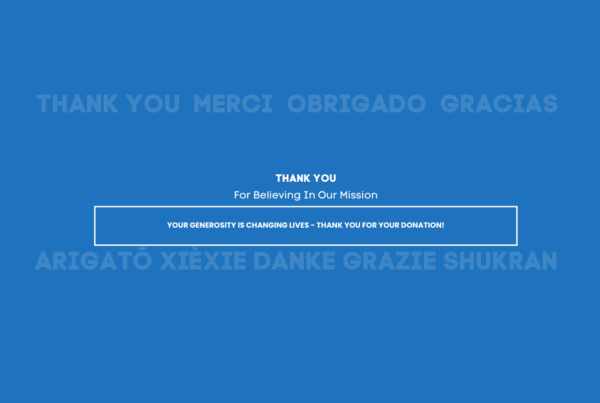DBT Treatment and Telehealth How are we doing?
Anyone else curious how we are evolving as DBT clinicians practicing telehealth?
Overall, online sessions presented their own dialectic, with therapists both lauding its ability to reach clients as never before, as well as lamenting the difficulty of a virtual therapy setting.
Transitioning to virtual platforms has required quick thinking, additional expense, and an ever-present focus on principals over protocols. In honor of BPD awareness month, we would like to highlight the most recent experiences of DBT clinicians practicing via telehealth. We will review both the collective concerns voiced by DBT clinicians , as well as shared and new suggestions for a telehealth platform. Our frame for this will be the modes of DBT. As always , we welcome comments for further discussions!
Our communications committee would like to thank the authors of the following papers for their comprehensive assessment of DBT treatment provided via telehealth.
First , an article was reviewed authored by K.A. Hyland, J.B. McDonald, C.L. Verzijl, D.C. Faraci, P.F. Calixte-Civil, C.M. Gorey, E. Verona, U. of South Florida, Telehealth for Dialectical Behavioral Therapy: A Commentary on the Experience of a Rapid Transition to Virtual Delivery of DBT, Cognitive and Behavioral Practice (2021). Additionally, we read the piece by M. Zalewski, C.J. Walton, S.L. Rizvi, A.W. White, C. Gamache Martin, J.R. O’Brien, L. Dimeff, Lessons Learned Conducting Dialectical Behavior Therapy via Telehealth in the Age of COVID-19, Cognitive and Behavioral Practice (2021).
Individual therapy sessions
Most providers were concerned about establishing a rapport with a new client, especially one they had never met in person! DBT explicitly relies on the strength of the therapeutic relationship to keep a client alive. Could this be done via telehealth? Risk assessments also felt risky over a video session, as without physically knowing a client’s location , where could a first responder be sent if needed? Confidentiality of sessions was another built in concern with telehealth. Where were our clients sitting, and who else might be in the room? And how do we define virtual therapy interfering behaviors? Therapists reported that client TIB’s seemed much more “ at the ready”, with clients either switching off their cameras or even abruptly ending a video call in the face of strong emotion. Younger clients proved especially distracted by their immediate environment. It also proved tricky to re-engage a client that left or retreated from a session, with clients easily choosing to not respond to outreach. Observing emotion focused content proved difficult at times, as in session non verbals and shifts in expression translated poorly over a computer screen.
This proved especially challenging when addressing extreme dysregulation or client dissociation. Lastly, therapists shared that collecting written assignments was difficult at times, as handing a client a blank diary card was not quite as straightforward on a screen as it had been in an office setting .
Suggestions
Structural
Building in a specific telehealth orientation early in the treatment can help with technology issues, as well as help establish a shared willingness to troubleshoot connection issues. This also could establish the “ new normal” of virtual therapy sessions. To address potential risk assessment issues, consider adding a routine location check at the start of each session each session. A written “ In Case Of Emergency “ form can also be required that is specific to telehealth concerns. Help a client define confidential space to meet for sessions , such as a car, a closed room , and consider asking clients to purchase headphones to add privacy to a session. This also reflects a therapist’s willingness to help and take a client seriously. Sharing the importance of client input on structural concerns also helps build rapport, and often teaches the therapist tricks of navigating online platforms! Following established DBT agendas includes asking for diary cards, which some clinicians now request prior to the sessions start . This reflects interest , expectations, and a therapist’s commitment to client goals. Some therapists advise working in the physical office, allowing better access to materials, as well as helping draw a line between the workday and life at home .
Clinical
Suicide risk is approached “in the same way as always” ( M. Zalewski, et. al ) , supporting the use of existing risk management strategies within the DBT protocol (e.g., tracking urges for suicide, use of crisis survival skills). After all, DBT therapists have been doing risk assessments via skills coaching contacts since learning the treatment. For example, if a client reports engaging in self-harm behavior over the previous week, a clinician may request to see the site of injury on the screen, as they would in person. An early and ongoing orientation to the energy and increased expressiveness required during a telehealth session might also help with session content. Validating a clients’ experience on a video screen requires lots of demonstrative gestures and deliberate facial expressions from the therapist. Also, both individual and group session norms can be openly discussed, with an evolving definition of what appearing engaged looks and sounds like to both the therapist and client.
Consider sharing the data that suggests that some clients experience disclosing information easier in telehealth sessions. Lastly, use self-involving self-disclosure that includes the frustration of virtual sessions! This can go a long way towards building rapport with a client who also struggles with the technology and format.
DBT Skills Groups
Structural and clinical concerns with group skills telehealth loomed large, with group facilitators naming several technological and clinical challenges. Clients calling in from smart phones often were unable to see all group members, and handouts proved difficult to see on a small screen. Internet connection quality was variable across each client’s connection, leading to visual and audible delays that were distracting. Opportunities to chat with co facilitators and group peers prior to groups and during session breaks dropped off sharply. Clients often signed into group late, disrupting session flow, kept cameras off, or simply “ hung up” during skills training sessions. Background distractions were plentiful, including pets, siblings, children, and package deliveries. Concern for confidentiality spiked as well with telehealth groups, as clients often called in from home with peers off camera in the same room, from the passenger side of a car, or from a college dormitory common area.
Suggestions
Structural
Open discussion of the pros and cons of signing on to group via a smart phone versus a larger screen could be built into a telehealth group orientation. Discussing options for internet access that included ethernet connection, or a stronger Wi-Fi signal at a local library or isolated corner of a facility could improve connectivity. Establishing group norms, such as arriving on time, removal of distractions such as cell phones, and avoiding side conversations verbally or via the chat box could reduce potential interfering behaviors. Make sure to use the waiting room feature , so late comers do not sporadically interrupt an ongoing session. Also, be sure to include telehealth tools to keep clients engaged, such a white board, video clips, emoji “ reactions”, quiz features, or power point presentations heavy on graphics.
Clinical
Like in individual sessions, a concrete orientation to what effective skills group participation looks like can be included at a client’s introduction to the group. Have a reference sheet for the online platform in use that shows clients where the emojis are, how to mute themselves when observing, and the fastest way to answer quiz questions. Orient repeatedly to the rules about silencing cell phones and side conversations. Mindfulness exercises focusing on the Participate skill may also help focus group clients at the start of session, as well as increase engagement with members. Some group facilitators have reached out and asked clients to turn in homework ahead of group, allowing a quick review ahead of time. This allows a bit more time for creative engagement during the review section of group. Directly asking clients to volunteer their thoughts versus waiting for a response can also contribute to an interactive group culture. To mimic the opportunity for casual chat, clients can be given the option to join sessions early, as well as “ hang around” during the group break. Lastly, therapists need to anchor themselves to the skills manual’s structure for group leaders and co leaders, with an emphasis on a co-leader spending additional time on helping clients join and remain in group the entire session.
Skills coaching contacts.
Here it seems that DBT providers have the edge on other treatments, as clinicians have extended themselves beyond individual and group sessions since the inception of DBT. As providers, we draw on a wealth of experience at risk management over a telephone, skills coaching via messaging apps, and generalizing skill practice via voice, video, or text. Some might say in this area, DBT clinicians are conducting business as usual! For future thought, perhaps a survey of ways clinicians may or may not use smart phone apps for coaching calls could be up for consideration.
Consultation Team
What is DBT treatment without a weekly consultation team? Moving the team meetings online was a necessary transition, and there were similar themes across all telehealth sessions. Naturally , technology issues presented themselves in Consultation Team. Physical and emotional isolation was cited as a primary source of burn out, as “ chatting in the break room” was no longer an option. “Doing the best we can” with online Consultation meetings translated into tending to children at home, keeping the family pets quiet, and distraction from other devices while in team. Some consultation teams ended up meeting less often due to conflicts, which unfortunately, took time away from therapy for the therapists.
Suggestions
Structural
How many of us struggled to open a client attachment, share our screens, or give a “ thumbs up” at the onset of telehealth practice? Use part of consultation team to troubleshoot technical issues and teach team members how to use features of online platforms. This can help decrease provider anxiety and avoid technology burn out. Also, consulting with veterans of telehealth can provide expert translation in a foreign land, which also might provide therapists a common connection and opportunity to commiserate as needed!
Clinical
Try and find time to connect with team members, even for five minutes following a team meeting. Sending the occasional funny text, email, or meme to each other can go a long way in tending to relationship. Also, remind yourselves that having weekly consult meetings is highest on the priority list for each therapist. Consider reviewing Team culture in this new online format, using textbooks or articles that discuss issues around DBT Teams, telehealth in general, or online burn out. Consider creating an additional task for the Observer in Consult Team that highlights specific online areas of drift. Work to establish a virtual culture that sets aside cell phones, closes tabs on browsers, and shuts the door on curious pets. As always, team roles should lean heavy on nonjudgmental stances, and a reminder of the fallibility agreement might lighten what is heavy!
Effectively practicing DBT takes determination. Adding in the requirement of telehealth sessions cast a complicated light on an already complex treatment. We would love to hear responses from our members on what has specifically helped you and your team make the transition, as well as any additional ideas on expert practice via an online platform.
Please send your experience to [email protected]. We look forward to further discussions!





